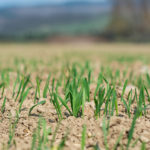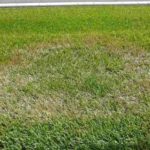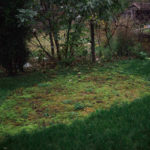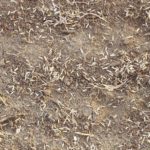
Ripping, tearing, slicing, slitting, cutting — all sound like unpleasant things to do to a perfectly innocent lawn. But if you have a dense underlayer of thatch keeping your lawn from doing its best, then your lawn will benefit from dethatching. We’ll explain what thatch is, how it develops, and how to free your yard from it and keep it from returning.
Just want a dethatching tool? Here are our top picks:
What Is Thatch?
Thatch is a tightly intermingled layer of dead and living grass shoots, stems and roots that accumulate above the soil and below the green vegetation.
A little bit of thatch is normal and even beneficial:
- It gives turf a bit of a bounce, beneficial for little feet and golf balls.
- A thin layer makes grass more resilientagainst wear.
- It insulatessoil and grass roots against temperature extremes.
Lawn thatch develops when the organic matter in grass produces more quickly than it decomposes. While a rapidly growing lawn sounds great, excessive thatch buildupleads to several problems:
- Disease-causing fungi and insectsare inside.
- It holds on to humidity,which promotes disease.
- It limits root growth,导致浅的草根阶层体系。
- Movement of air, water and nutrientsin the soil is slowed.

| How Do You Measure Thatch? |
| 1.Take a trowel 2.Dig out a two-inch deep piecefrom the lawn 3.Measure the brown spongy materialbetween the dirt and the green vegetation 4.Cut several plugs,to be sure. |
Common Causes of Thatch
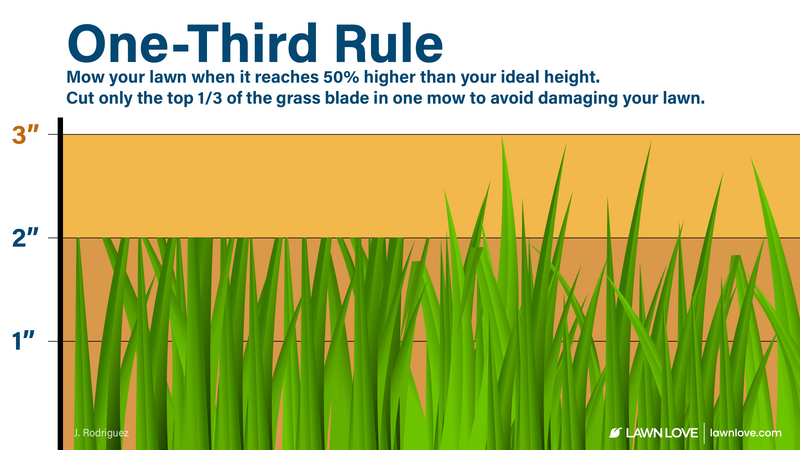
People used to think thatch comes fromgrass clippings, Don Callahan with the Yamhill County Extension in Oregon says. But thick thatch is a result of other things:
- Dead leavesdecaying along with stems and roots
- Roots growingin the thatch but not reaching the soil under it
- Lateral shoot growth(aka stolons and rhizomes), something that can happen when thatch interferes with roots trying to grow down
- Infrequent mowing.Lawns should be mowed weekly during the growing season, or, if you want to keep measuring, check out a full list ofmowing heights for each grass.
- Taking off too much at once:You want to follow the one-third rule or mowing, which says to remove up to one-third of the height of the grass (but no more!) per mow. Taking off too much at once places stress on the grass and can weaken it and slow its recovery time. If your lawn is too tall, take down the height over several mows.
- Excessive water:Giving the lawn too much water or having wet soil(often caused by drainage problems)
- Dry soils, when it is chronic or when the thatch is keeping water from getting through
- Pesticidesused on a regular basis, not as needed. Plus, they can kill earthworms, which stimulate the breakdown of thatch.
- The type of grass matters. Some turfgrass speciesproducea lot of stem tissue:Cool-season grasses to watch includeKentucky bluegrass, creeping bentgrass, and creeping red fescue.Conversely, perennial ryegrass and tall fescue do not produce significant thatch build up.
If you have a warm-season lawn, these grasses are prone to excess thatch:Bermudagrass, centipedegrass, St. Augustinegras, Zoysiagrass.
Signs Your Lawn Needs Dethatching
- The thatch is a half-inchor more
- A bouncy or spongy feelwhen you walk on it
- Dry spots, which appear when water isn’t making it through the thatch
- Footprinting(footprints take more than an hour to go away)
- Diseases(the grass is more vulnerable)
- Insect problems(because the grass isn’t healthy)
- Decreased hardiness(shows greater distress in heat or cold)
When to Dethatch a Lawn
Warm season grasses should be dethatched in the late spring or summer, cool season grasses in the late summer or early fall. These times correspond with their annual growth spurts and favor rapid recovery. That means three or four weeks of good growing weather (at least) after the dethatching.

Which grass type do you have? Cool-season lawns are most often grown in the upper U.S. Warm-season grasses thrive in warmer regions, such as in the South and along more southern or coastal areas.

Cool-season lawn grasses:
- Fine fescues
- Kentucky bluegrass
- Perennial ryegrass
- Tall fescue

Warm-season lawn grasses:
- Bahiagrass
- Bermudagrass
- Buffalograss
- Carpetgrass
- Centipedegrass
- St. Augustinegrass
- Zoysiagrass
How to Dethatch a Lawn
- Dethatch with moist soilbut not wet. The Virginia Extensionrecommendswatering thoroughly two days before you plan to bring out the big guns.
- Run the dethatching machine three timesat least, Callahan says, and in different directions each time.
- The machine should churn uproughly the same volume of material each pass, he says.
- 再保险move the piles of thatchright after dethatching.
- Seed the lawn. The time is right to get some fresh seed and new turfgrass into your lawn, Callahan says.
- Consider topdressing. It can give the existing root system a boost.Topdressingcan also be a form of weed control, filling those gaps before weeds have a chance to take hold.
- Wait a month. Then you should see some results, Callahan says.
Preventing Thatch Buildup From Returning

- Fertilize the lawn. Fertilize only enough to maintain your lawn’s desired color and growth. Fertilizing in fall (September) orlate fall(through December) is better than spring fertilization because the grass stores carbohydrates more efficiently and grows stronger roots.
- Aerate the soil.You want proper drainage. Fertilize a week before you aerate so the grass grows quickly into the holes.
- Mow properly. Trim no more than one-third of the height of the grass. Leave the grass clippings; they decompose rapidly, recycling nutrients back into the lawn.
- Avoid pesticides, unless they are necessary. Then use them for a specific reason, deciding on a specific type, for a specific length of time.
- Test your soil periodicallyfor itsnutrient levels and acidity. If you are concerned about over-fertilizing or want to manage pH, testing the soil is the way to go, and is a viable DIY project. Too much fertilizer can cause an overproduction of thatch. Test your soil and only fertilize if needed.
Dethatching Tools: A Guide
Dethatching machines come in various forms. And although some lawn services and rental companies use the terms interchangeably, the machines perform dethatching by different means, with varying levels of intensity.
What they have in common are spinning metal pieces that pierce and lift the thatch from the lawn. Some employ slicers, others metal tines (experts recommend the former as more effective). Some are stand-alone, powered units, others are made to be dragged behind a tractor or riding mower.
Here are some of the most common dethatching techniques, and the power dethatchers that perform them.
| Core Aerator | Aeration is an option for lawns with a mild amount of thatch. A core aerator will pull up plugs of sod and soil, which can provide space for nutrients and grass roots to penetrate beneath the thatch layer. However, you can’t aerate to remove large volumes of thatch. |
| Power Rakes | Power rakes attack serious thatch. Using apower rakecarries some risk to the lawn since they can pull up live plants along with dead grass. They come with adjustable flail blades that allow deep penetration into the lawn. |
| Slit Seeders | These are all-in-one machines owned by some professional lawn care companies. They have one set of spinning blades that dethatch, then another set of circular blades that lay down grooves. They can have tines. They dethatch and plant grass seed in a single pass. These machines will lift a large volume of thatch — even on small lawns, it can produce enough to fill several lawn bags — that needs to be gathered up with a rake or lawn mower with the mulching unit attached. |
| Sod Cutter | These machines are for the most-serious thatch problems — 1 inch or more. They have thick blades that cut through to the soil surface and allow you to remove sod in strips. You need to completely renovate the lawn if using a sod cutter. |
| Vertical Slicer | Vertical slicer orverticuttingmachines slice through the lawn to pull up thatch. Often used on sports fields, set the vertical lawn mower low enough to leave some soil on the surface of your lawn. It should cut about a quarter-inch into the soil after the grass blades have gone all the way through thethatchlayer. Hand rake loose thatch after slicing, leaving the soil layer as topdressing. |
How Much Dethatching Costs
Lawn care professionalscharge$175 per houror$200 to $400 per 1,000 square feetto dethatch the lawn.
The cost to rent machines:
- Simple, motorized dethatching machinescan run from thelow $100s to nearly $300.
- Tow-behind dethatcherscan vary widely, from about$70 to almost $3,000, depending on its size and features.
- Nonmotorizedoptions can run as low as$35for a simple thatching rake. A gas-powered version can be rented starting around$50.
- Slicing dethatcherscome in a wide variety of options. One option is an attachment that fits on a regular walk-behind tiller, which runs about$80. Push, walk-behind, and tow-behind options can range from as low as$39to more than$350.
- 再保险ntal optionsare available for slicers, too, with prices in the ballpark of$110per day.
DIY? Or Call in a Lawn Care Pro?
If slicing up that turf you’ve worked so hard on makes you more than a little nervous, it’s best to leave it in the hands of aprofessional lawn care service. In addition, the service has experience using the equipment, and has every piece that might be needed.
If you can handle a walk-behind lawn mower, you can handle a dethatching machine, Callahan says. And a dethatching machine is what is needed, he adds. Dethatching an entire lawn by hand is a “horrendous job and not effective,” Callahan says. If you are going to dethatch the lawn yourself, get a rake; you will need it for the clean up.
FAQs
Despite popular belief, short clippings dropped on the lawn after mowing are not the cause of thatch buildup. Grass clippings are very high in water content and break down rapidly when returned to lawns after mowing, assuming lawns are mowed on a regular basis (not removing more than one-third of the leaf blade).
Dethatching移除阻碍的有机物质s the flow of nutrients. Aeration removes cores of soil, something that relieves soil that has become compacted and gives roots space to grow. Aeration will remove small amounts of thatch.
Dethatching should not be done during periods of high temperatures, drought, or during late fall when winter is near. It’s best to dethatch at the beginning of the grass’s period of active growth.
A soil pH between6.0 and 7.0will favor microbial activity and breakdown of thatch.
Conclusion: A Call to Action
Don’t wait for your lawn to start losing its color or the grass to start dying to take action. Take a trowel and check how much thatch you have. If you have a thick layer of thatch, contact alocal lawn care proto take this destructive, but necessary, chore off your lawn care to-do list.
LawnStarter participates in the Amazon Services LLC Associates Program, an affiliate advertising program. LawnStarter may earn revenue from products promoted in this article.
LawnStarter participates in Get Sunday’s affiliate advertising program. LawnStarter may earn revenue from products promoted in this article.
Main Image Credit:Agri-Fab, Inc./ Wikimedia Commons /CC0 1.0

